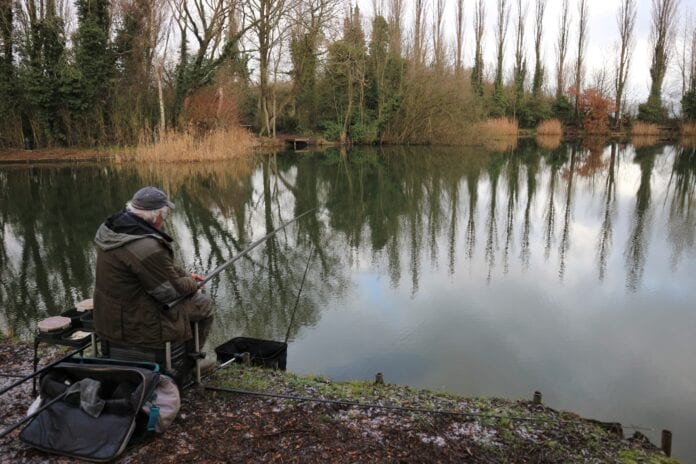LOST IN LINCOLNSHIRE
I started the New Year trying a new venue a fishing mate had discovered. It was a bit off the beaten track in a place called Timberland, hidden in the depths of Lincolnshire. This was just before we were advised to fish local, although it wasn’t that far, and still in the same county where I live. It was a freezing cold morning and the back roads were treacherous – like an ice-skating rink – but I found the place okay. The owner had to let us in because Peacock Waters, as the fishery is called, doesn’t open officially until March. A quick tour revealed a well-matured, two-acre-plus lake, which was originally a clay pit. An island and backwater were frozen solid, not that it mattered because there were plenty of feature pegs to explore on the opposite, deeper side, where plenty of fish could be seen topping when we arrived. Of course, once we set up, all the surface activity ceased. There was still frost on the ground and some nasty squally showers were blowing through. This wasn’t going to be easy.
SLEAFORD DAVE
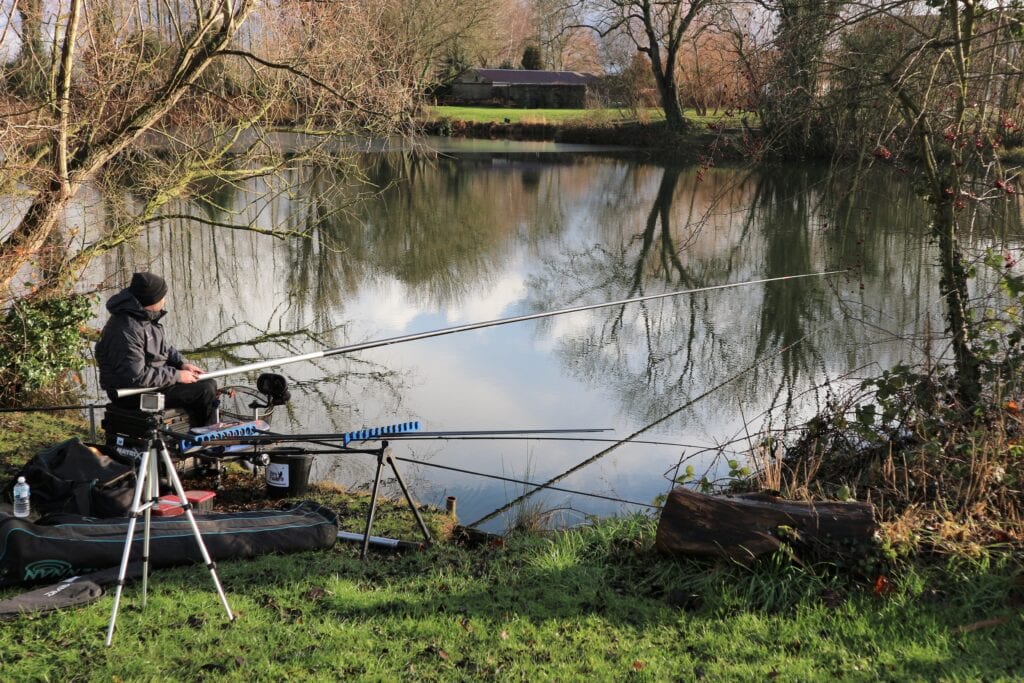

Dave Eastwood lives in nearby Sleaford and writes a similar column to my Grantham one in his local paper. It’s always interesting to exchange information on different venues in the area, because there are so many gems dotted around the countryside. This one offers holiday accommodation in normal times, comprising a static caravan and large converted barn. Such places provide a great step into angling for many. I doubt if the powers that be realise the big numbers that are introduced to the sport this way. I started my fishing on a park lake, and I don’t see many of those available these days, so mini holiday complexes have become important. Anyway, Dave tried a few chucks on feeder tackle first, finding it very deep out in the middle of the lake. He quickly decided to make the pole his main line of attack, with full and mid-depth rigs set up, which was similar to what I had decided to do. Careful feeding was to be the order of the day, going easy with groundbait and any loose gear.
TREADING CAREFULLY
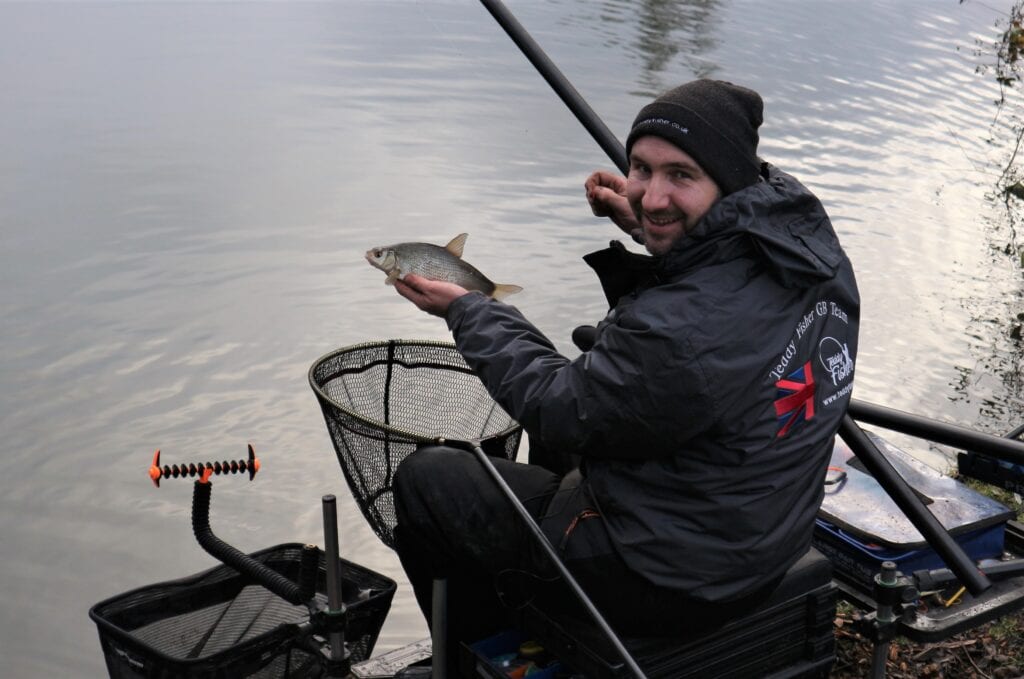

I began cautiously with punched bread, feeding a soft ball of crumb at around 10 metres, towards the bottom of the shelf in around 14ft of water. This would allow me to search around on and off the deck, bearing in mind all that surface activity when we arrived. I did manage to miss a bite two feet off bottom, but there were no signs at full depth. More crumb didn’t work, so I started to feed a few casters every put in and eventually caught a 4oz roach on a red maggot, with my rig set slightly over-depth. A couple more followed before I switched to single caster on the hook. It looked like the place was waking up, so I went to see how Dave was doing just around the corner. He had started getting bites too, fishing maggots over minimal groundbait. A couple of roach were followed by this lively hybrid. The owner had told us there are plenty of bream in the lake, but I couldn’t see these feeding in such minimal temperatures. Something to look forward to when it gets warmer.
WELCOME SURPRISES
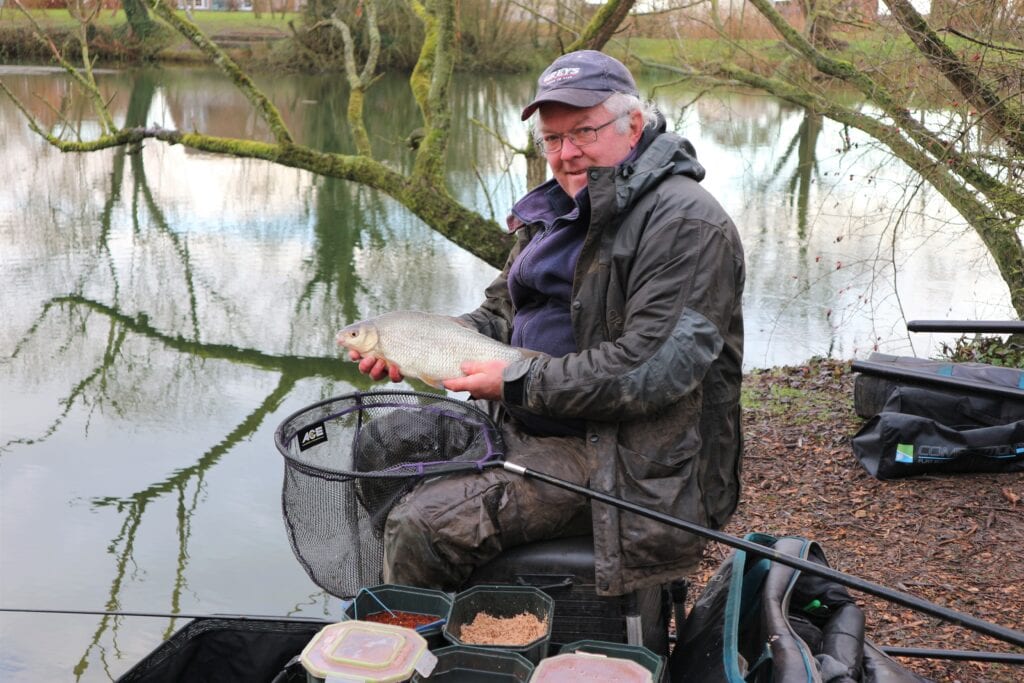

Apparently, there is also a good head of chub, with a magnificent seven-pounder recorded, along with big perch, carp to over 30lbs, and rudd to 3lbs. After a string of roach on caster, I thought I might have hooked into a chub when a fast bite turned into a proper elastic-stretcher. I had just tried a crafty winter trick of adding a pole section and laying my rig in just past where I had been feeding. Sure enough, my float sailed away and something powerful was having a good pull out in the middle of the bay I was fishing. When whatever it was neared the surface, I saw a big flash of silver and immediately thought if this was another roach, it was going to be a two-pounder. But when it surfaced a lack of red fins revealed it was a hybrid. When I eventually netted the fish it was still well received, considering the conditions. Not long after, the same thing happened again, only this time a second hybrid was a bit smaller. It’s amazing how fishing just off your feed can work so well.
NEW METHOD
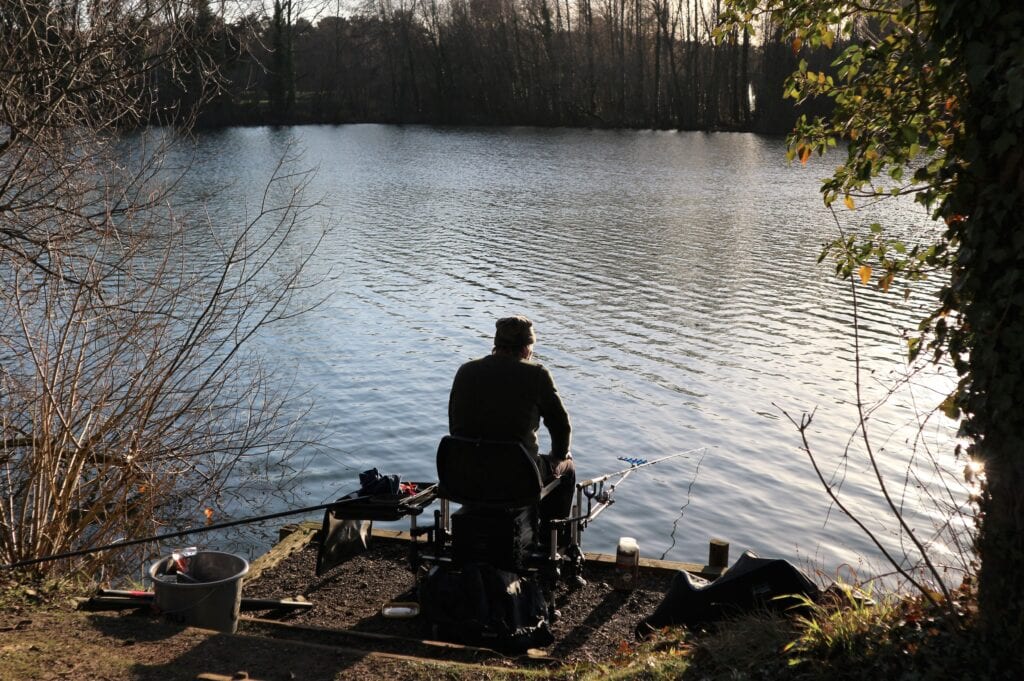

Yet another lockdown, so best to stay close to home, which for me means just a few miles up the road at Woodland Waters. I had arranged to have a fish with Pete the bailiff, who keeps telling me how good helicopter rigs are at this time of the year. Being stubborn, I insisted if I was going to have a go at this method, it would be my way with a quivertip rod. I’m not about to start investing in bite alarms, rod pods, bobbin indicators and light specimen rods just yet! Pete had set up next door, while I experimented in the next peg. He had a good chuckle when he saw my rig. I had bought an off-the-shelf, ready-to-go heli rig, which was simply threaded onto my main line, followed by tying on a blockend feeder and attaching a short hook length. Pete, in his normal direct manner, told me there was too much going on. I thought the way my maggot hook bait was dangling just next to the feeder looked perfect. It obviously wasn’t because I didn’t get any interest whatsoever.
HOW IT’S DONE
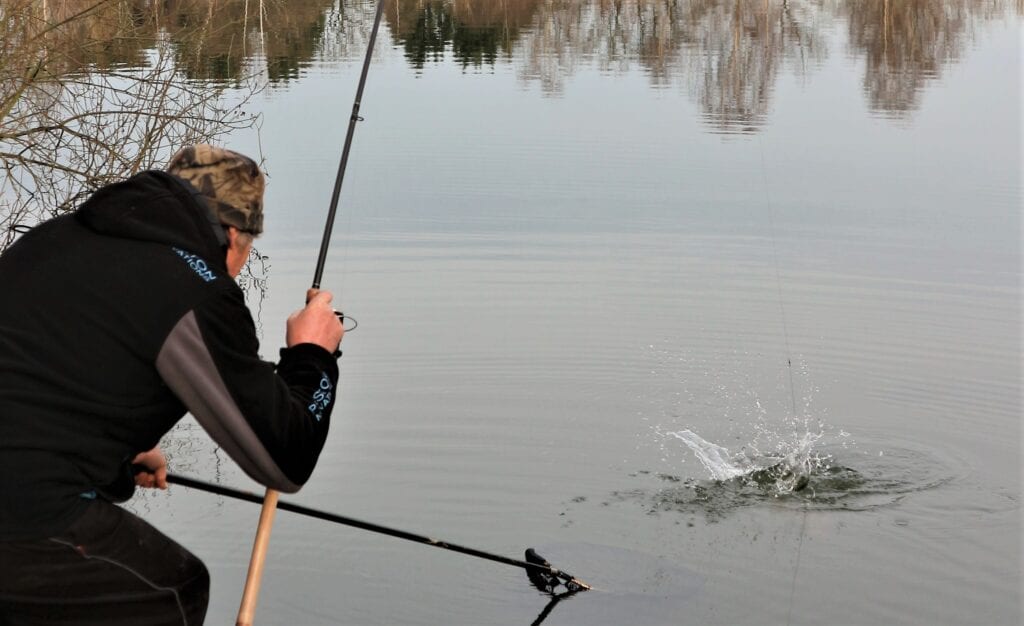

To be fair, it was an off day all round, so we decided to have another go later in the week, this time with Pete showing me how to do things properly. He set up light specimen gear, comprising two rods and Optonics. Next came 40g maggot feeders, the type I’d expect to see on the nearby River Trent, not on a lake. I can’t fish like that on such a beautiful stillwater, so I set up a waggler, thinking this would be a much better bet than crashing heavy feeders out into the blue yonder. How wrong I was. It only took a few casts, and forty minutes later Pete’s bite alarms were making all sorts of weird noises. The big roach had arrived, like Pete said they would. They were obviously competing for the maggots he was putting through his blockend feeders. What amazed me most was the way the normally super-cautious big red fins were being mugged on short and quite thick hook lengths, combined with heavy wire gauge hooks. I was using much lighter tackle and couldn’t buy a bite!
CURRY CLUB
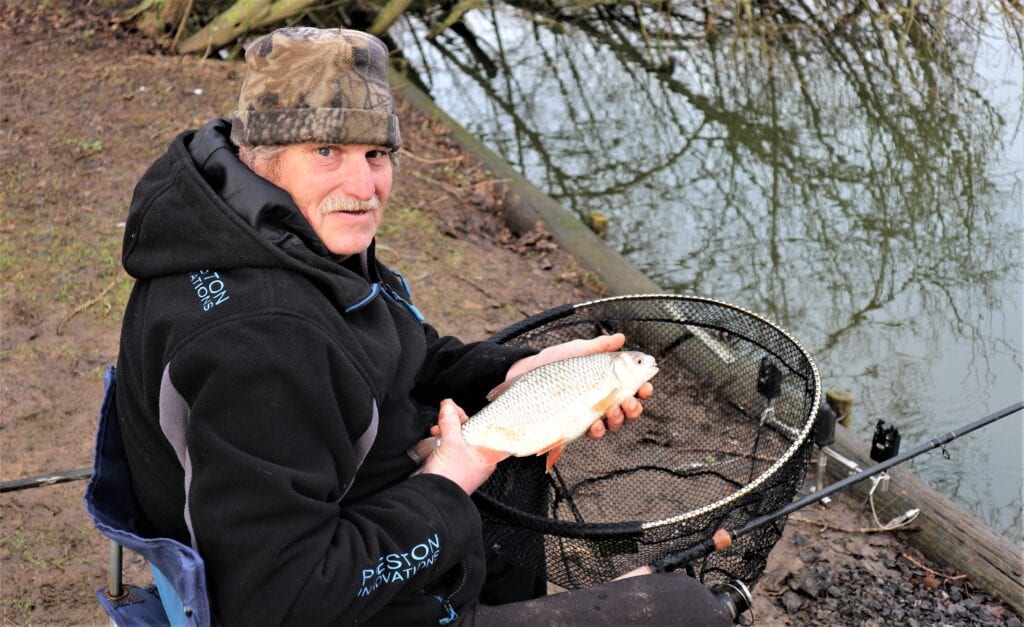

The heli set-up might have been provoking the fish to have a go when nobody else was catching, but what Pete was putting on his maggots was possibly helping too. He swears by curry powder and it’s not just a case of dumping it on his bait. He reckons the pungent flavouring peaks after three days, once a couple of tablespoons worth have been sprinkled over a few pints of maggots. His bait did look and smell good and the big roach were scoffing it up big time. I couldn’t get over the extra-short hook lengths being used, set just above big Kamasan Black Cap blockends, that had extra weights strapped on. The hook lengths were trapped between two line stops, free to rotate on tiny metal rig rings. The total weight of each doctored feeder was enough to anchor them in fast-flowing rivers and yet they were just as effective in a stillwater, cast some 50 metres out. Now I’d seen how helicopter rigs work so well, I began to contemplate how to adapt this idea to my quivertip rods.
FURRY FRIEND
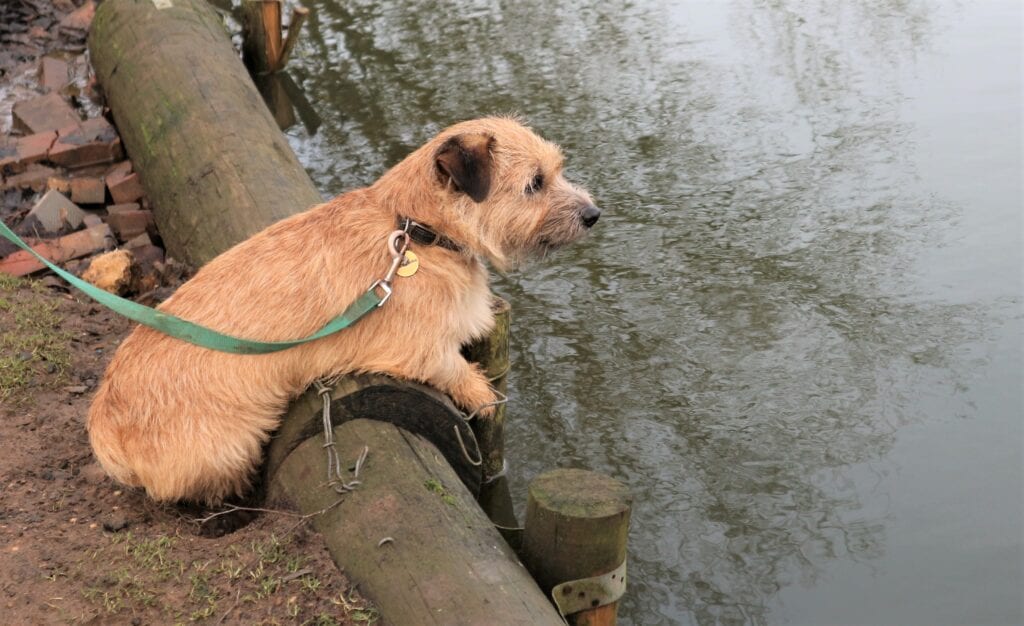

This is my new mate Ralph. His owner takes him fishing, so this amazing little dog knows what it’s all about. After watching my waggler being cast out, Ralph was immediately perched by my side like a coiled spring, absolutely transfixed while watching my bright float tip. I joked with Pete that I didn’t need any electronic bite indicators with my furry version, who I’m sure would let me know if anything was going on out there. I had just lost a carp on my insert waggler rig, after the hook pulled when it woke up and went on a searing run. But apart from that bite out of the blue, nothing else had turned up for me. Even Ralph got bored in the end and wandered over to watch Pete, who at one time had both rods almost jumping off their rests, thanks to his feeding shoal of korma-loving roach. This helicopter bolt rig thing was a real eye-opener. As I watched my orange float tip sitting motionless out in the icy green water, I started to think about ways of using less heavy and smaller blockends, so they would tie in better with my lighter feeder rods. My rig format could be better too.
BIG INTRUDER
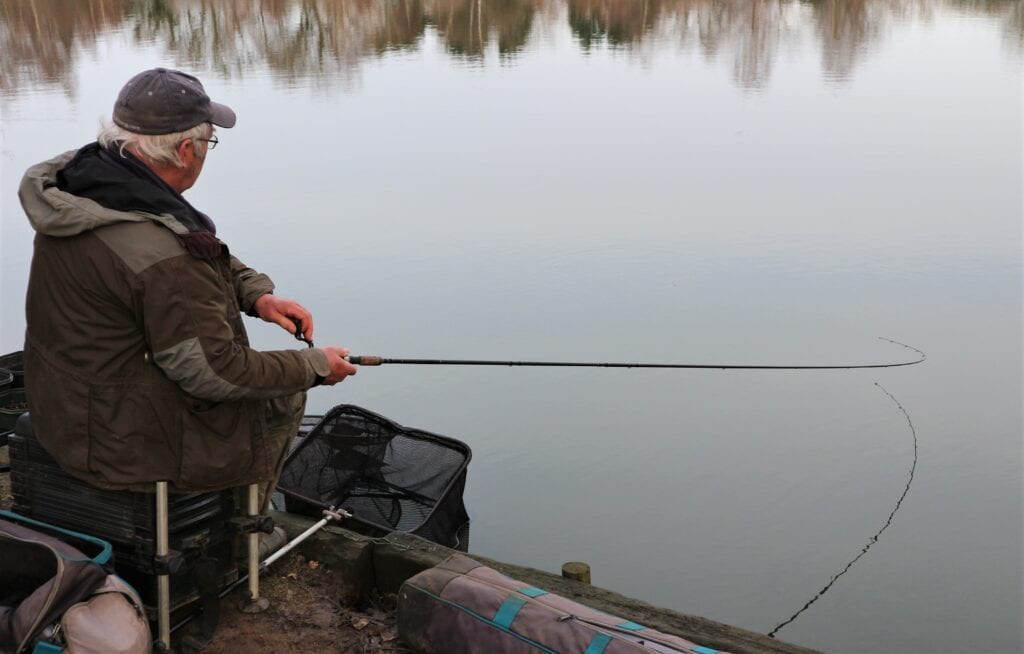

While my concentration was miles away from where it should have been, I suddenly noticed my float had disappeared. I gently lifted my rod to find something big and ponderous attached. At first I thought it was a bream, but suddenly it woke up and, like the previous lost fish, went on an unstoppable run right across the lake. I was down to my backing line by the time I managed to stop the unseen force and luckily nobody was fishing over the other side. Slowly, I got most of the line back on my reel only for the fish, which had turned into a big carp, to go running off to my left. It somehow went over both of Pete’s lines, then under a big overhanging tree and came out the other side. I was only using a 0.10mm hook length and I still can’t believe how I managed to haul everything back, including nearly pulling both Pete’s rods into the water! I finally got the lump under my rod tip and was just thinking of reaching for my landing net when my tiny hook pinged out.
TWEAKING IT
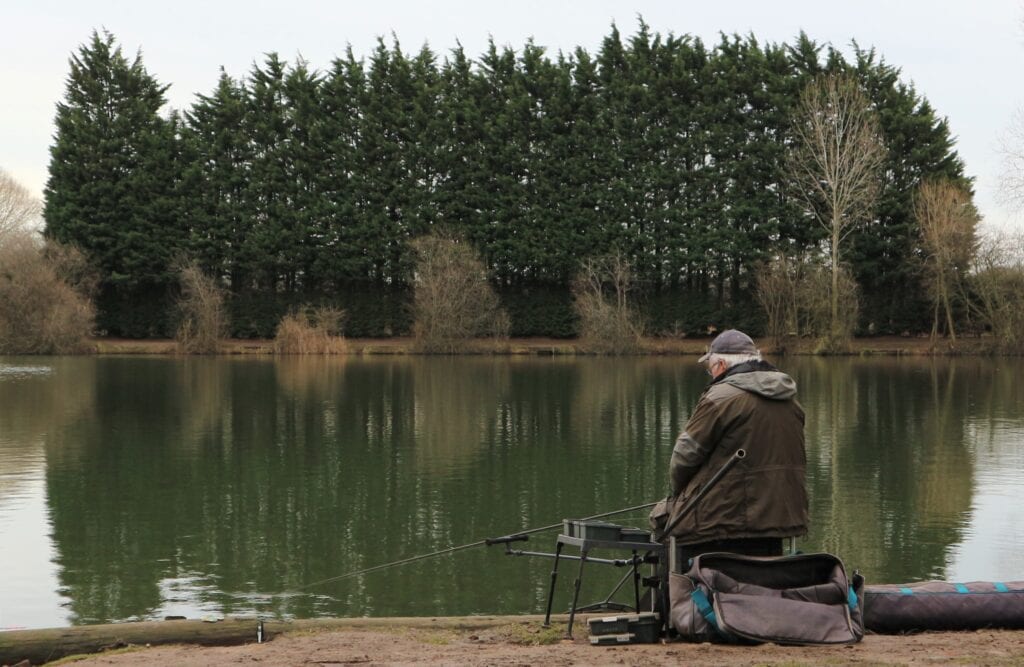

I had to go back and try this helicopter method again, only this time doing it my way and, hopefully, a lot better than the previous attempt. Remembering what Pete had said, I simplified the rig right down. This time it was going to be a short hook length attached to a small swivel bead, sandwiched between a couple of line stops, set a few inches above a small 20g Kamasan Black Cap Feeder. The hook length was formed from stiff fluorocarbon, around 6 inches long, tied to a strong size 16 eyed hook. I know some anglers use even shorter hook lengths with this method, but after a few test casts, I found nothing tangled if I set the hook bait dangling just below the feeder. For main line I was again using fluorocarbon, because I like the way this gear sinks so much faster than normal mono or braid, plus it has minimal stretch and shows up bites well. Another good reason for a slightly longer hook length was due to me using a quivertip and medium-action 12ft feeder rod.
SUCCESS AT LAST
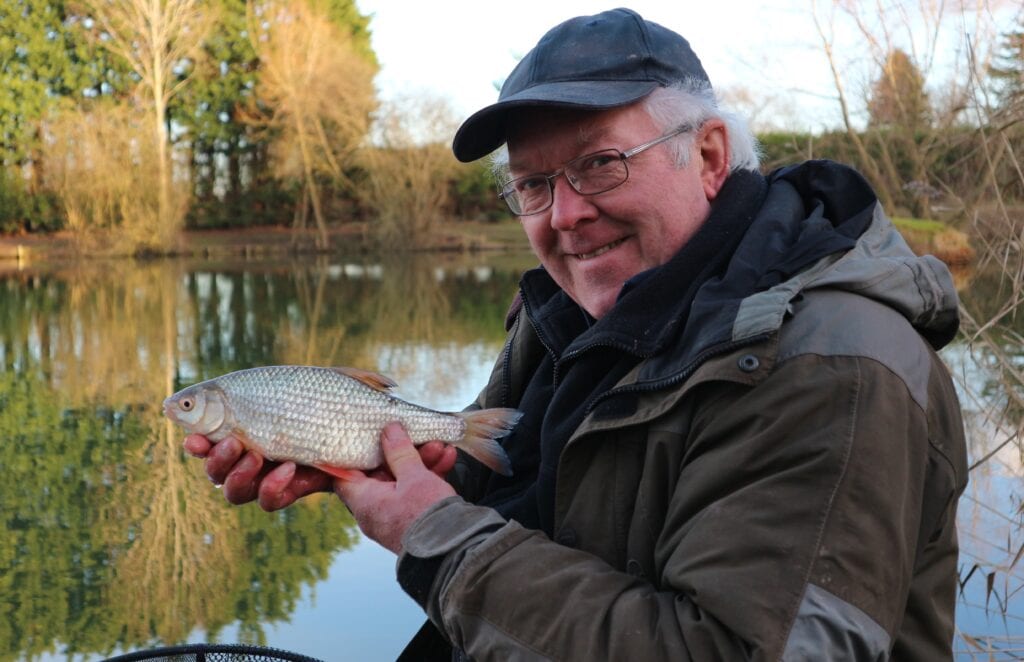

I kept fresh loadings of maggots going into my swim every 10 minutes but didn’t have any indications for two hours. Everything appeared to be working okay, with no tangles. I even tried dropping the rig down the edge and it looked spot on, with my hook bait lying right next to the feeder. Just as I was thinking this new set up wasn’t going to work, my quivertip started bouncing around, so I gently lifted the rod into whatever was hanging on. With such a short, unforgiving hook length, I went very easy playing the fish in, feeling every nod transmitted through my quivertip rod. I eventually netted a good roach. Suddenly the swim was alive and several more roach followed, all over half a pound, plus a couple twice that size. Thick line and a heavy-duty hook were magically bringing quality fish that had been ignoring baits presented on proper light tackle, with the fish almost hanging themselves. Just goes to show that bait presentation is key to winter success.
THE PIT STOP
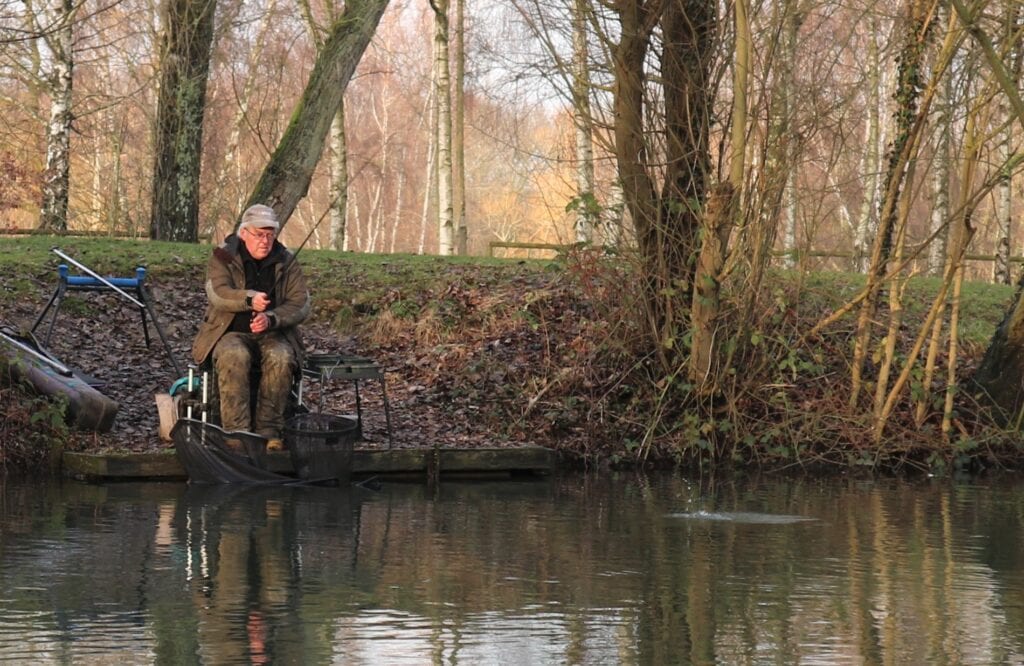

I love fishing small carp lakes in winter, but not for the main species, instead targeting the silver fish. Roach in particular thrive in such places and rarely get caught, simply because nobody fishes fine enough for them. This gives me the chance to try different things and at the same time enjoy bite-filled sessions, a refuelling exercise if you like, much needed after it had been such hard graft elsewhere. The somewhat misleadingly titled Carp Lake at Woodies actually holds an amazing span of different species, allowing all sorts of methods to be tried. I fancied a go with a whip for a change. I originally set up 5 metres to hand, but with extra rainwater running in, I had to shorten down my light rig and then add pole sections to get decent presentation in the shallow water. I enjoy fishing with a flick tip, because it’s super-fast on the strike, transmitting every movement from hooked fish. It took a while to get things going, regularly loose feeding a few maggots every put in.
WHIP FRENZY
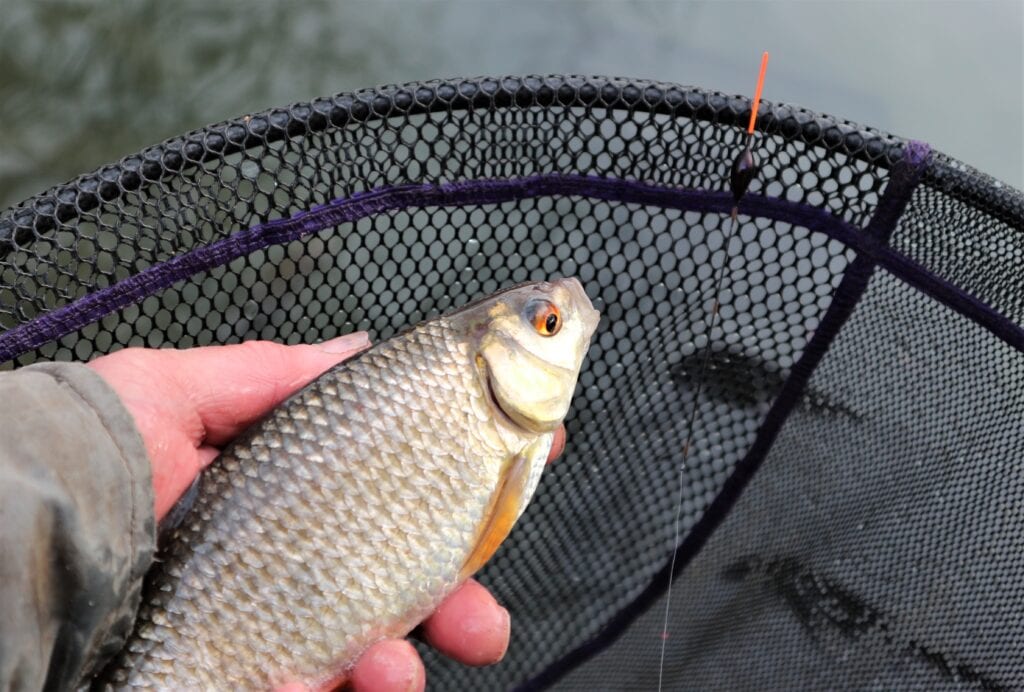

Suddenly the fish arrived and then it was a bite a chuck. I had to spread the micro shot out on my light rig because the roach were taking on the drop, or just as a single maggot settled on the bottom. A size 20 hook and 0.08mm trace did the business, with lots of 2-4oz fish to begin with, but as I built the swim up bigger samples moved in. The water was quite clear, so the quality red fins were a bit spooky. In the end I found by resting the swim for a minute and double-feeding it, before laying the tackle in again, bigger fish resulted. I caught close to double figures during a frantic couple of hours. For such a heavily-fished place, it was amazing to see how pristine all the roach were. I don’t think any of them had been caught before. A great finish to a tough month, but it had been fascinating learning about the new helicopter method, which I am continuing to fine-tune. I will tell you more about this during February, as I have discovered some very interesting things along the way.










